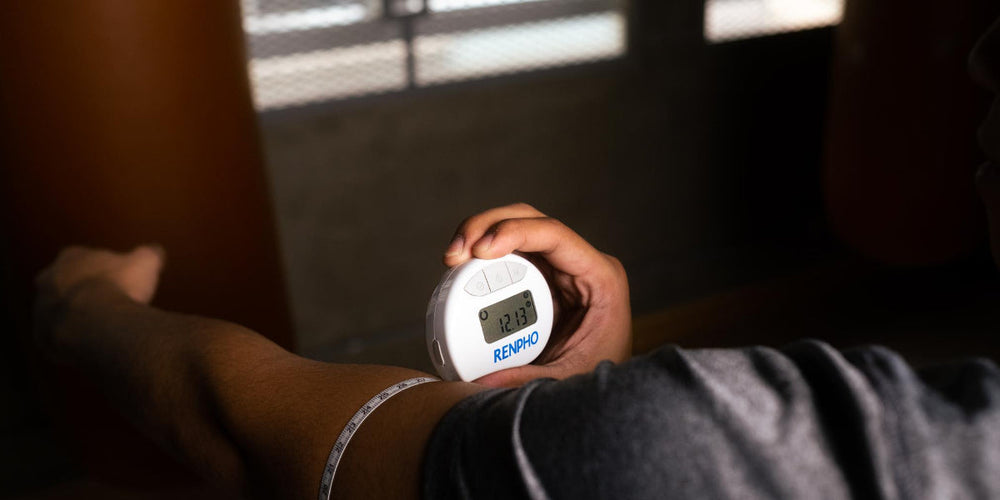Importance of Negative Reps for Muscle Growth

Stay tuned to our latest news
If you ever went on a hike up the mountain, you’ll know that coming down will tire you even more because you’re using your muscles in a way that you normally don’t. You are lengthening your muscles while still applying tension. Another way to look at it is when you’re lowering the weight under control. These types of exercises are known as eccentric muscle training or negative reps. It is the yin to the yang of particular exercises. In this article, we will cover what negative reps are, including their benefits, and walk you through how to perform them.
What are negative reps?
Imagine yourself picking up a dumbbell and performing a bicep curl. As you lift the weight, your bicep muscle will contract and shorten. This muscle contraction is known as concentric or positive contraction. For most people, this is what they think as the ‘important’ part of working out, but that is not entirely true. There is another type of muscle contraction that can occur when you lower the dumbbell slowly and under control. This movement is known as eccentric or negative strength training.
Why negative reps?

Most recent research has shown that chronically performed negative reps are particularly effective compared to concentric contractions due to muscle fibres being induced to physiological ‘micro-damage’ after a successful negative rep. This will stimulate the release of mTORC1 – a signalling molecule that switches muscle genes and instructs them to grow. Here are the most sought-after benefits of including negative reps in your workout routine
1. Negative reps improve flexibility
Compared to positive muscle movement, negative reps require less energy and muscle activity to perform in the same force level. This is because of titin – an elastic muscle similar to a spring coil that’s responsible for resisting the lengthening of muscles. Basically, when combined with static stretching exercises, negative reps will enhance movement efficiency and flexibility.
2. Negative reps yield greater muscle hypertrophy
Although negative strength training might not produce as much muscle fatigue, it does produce a lot of muscle damage. This may sound scary but actually the more muscle tissues are damaged during a workout session, the more gain in muscle strength and hypertrophy. According to the Healthline article, body builders should aim for 6-12 reps and 60-90 seconds of rest to make the most out of their workout session.
3. Negative reps allow supramaximal training

Bodybuilders are always on the lookout for new and effective technique to add more muscle and breakthrough the plateaus. One way to achieve that is supramaximal interval training. It involves cycle of intense exercise followed by periods of muscle recovery at home. The weights used in supramaximal training is beyond one’s current strength level, but instead of lifting it up, the focus is on merely holding and lowering the weight down.
4. Negative reps reduce risks of injury
Concentric training often involves ego-lifting practices such as jerking and throwing weights after a rep. However, with negative reps, the body is forced to put aside the ego-lifting and lower the weight under control and in a perfect form. This will most likely reduces the risks of recurring injuries and the likelihood of new ones.
How to perform negative reps
Negative reps exercises will vary a great deal depending on the person’s level of experience, sport and goals . However, the main trick is to not overdo it. Instead of adding it to every exercise, it is preferable that you pick one exercise that you’d like to improve on and incorporate a set of 5 to 10 reps of slow and controlled negative movements to avoid overtraining. For instance, suppose you are performing a bench press of 4 to 5 sets, add 1-2 sets of negative reps after the last set.
How often can you perform negative reps?
Negative reps can greatly tax your muscles, so you need to examine your weekly training volume and know how quickly you can recover between workout sessions. Suppose, you are on a four to five day training split, adding negative reps into every workout should not be a problem. However, always listen to your body and make appropriate adjustments.
The Bottom Line
Negative reps or eccentric training is one of the advanced strength training techniques that involves lengthening of muscle tissues by slowly lowering weights under control. Some potential benefits of doing negative reps include, improved flexibility and efficient movement, greater muscle hypertrophy, supramaximal training effect and reduced risks of injuries during workout. The right number of negative reps vary from person to person; however, it is best to incorporate them after a successful concentric set to avoid overtraining.
Renpho Health Tips
-

Here's All You Need to Know About Body Tape Measurements
Oct 11, 2022
Read more >
-

What is Body Composition?
Aug 03, 2020
Read more >
-

Working Out? Here are 7 Tips to Make It Eco-Friendly
Oct 04, 2022
Read more >
-

Staying Active as You Age: Why It's Important
Sep 29, 2022
Read more >
-

Doctor Shares Tips to Track Your Weight Loss Progress
Sep 27, 2022
Read more >





